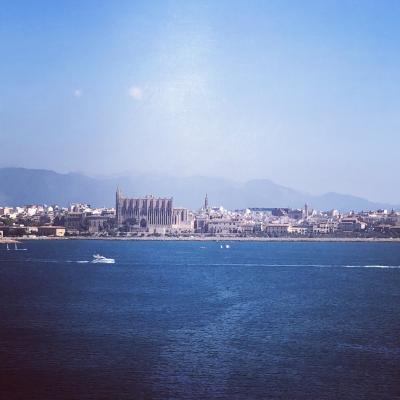What is the significance of the Cathedral of Palma in relation to Mallorca's history?
Similar Topics
cathedral of palma
la seu
mallorca
gothic architecture
moorish to christian
reconquista
king james i
antoni gaudí
religious ceremonies
cultural heritage
The Cathedral of Palma, known as La Seu, is a significant landmark in Mallorca's history, both architecturally and culturally. Built between 1229 and 1346 on the site of a former mosque, it symbolizes the transition from Moorish to Christian rule following the Reconquista, when King James I of Aragon conquered the island. The cathedral's impressive Gothic architecture features a stunning rose window, one of the largest in Europe, and an elaborate altar designed by the renowned artist Antoni Gaudí during restoration works in the early 20th century.
Beyond its architectural importance, La Seu has played a crucial role in the religious and cultural life of Mallorca. It serves as the seat of the Bishop of Mallorca and has been a focal point for numerous religious ceremonies throughout the centuries. Its prominence also reflects the island's economic and cultural development, with the cathedral drawing numerous pilgrims and tourists, thus contributing to Mallorca's status as a key Mediterranean destination. Additionally, the cathedral's surrounding area, including the old town of Palma, showcases the island's rich history, with remnants from various periods of its past. Overall, La Seu is not only a place of worship but also a symbol of Mallorca's identity and heritage.
Beyond its architectural importance, La Seu has played a crucial role in the religious and cultural life of Mallorca. It serves as the seat of the Bishop of Mallorca and has been a focal point for numerous religious ceremonies throughout the centuries. Its prominence also reflects the island's economic and cultural development, with the cathedral drawing numerous pilgrims and tourists, thus contributing to Mallorca's status as a key Mediterranean destination. Additionally, the cathedral's surrounding area, including the old town of Palma, showcases the island's rich history, with remnants from various periods of its past. Overall, La Seu is not only a place of worship but also a symbol of Mallorca's identity and heritage.
🧩 Related Questions
Related Question
Why is Almudaina Palace considered a significant symbol of Mallorca’s medieval history?
Related Question
How do Mallorca’s emergency response protocols function to assist victims of domestic violence?
Related Question
Where can tourists find authentic olive oil tastings and tours in Mallorca?

